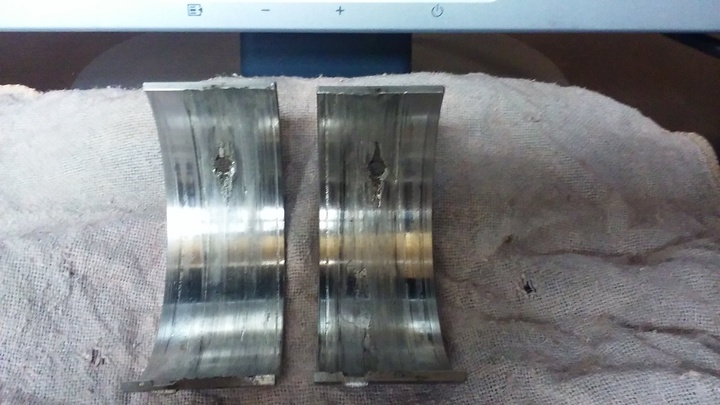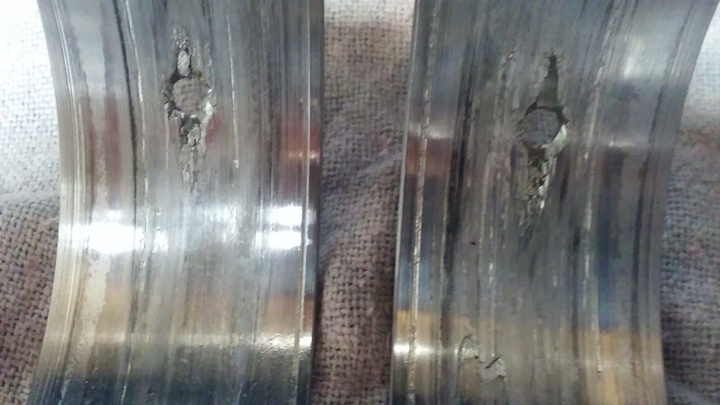(quoted from post at 21:31:37 03/24/16) Gosh, glad to hear what sounds better than could be. Here's a problem that I see. Oil made it to the rod journal but spun a bearing. Before you go ANY further, the missing metal from at least that bearing went somewhere. It's going to end up somewhere. It could be in the screen of the oil pump pickup. It could end up in some other journal, whether it be the cam or another rod journal. Job one, what caused it so that there isn't a repeat? Job two, preventing a repeat and co$ting your$self a whole lot more money and aggravation. You know what needs to be done. How do I know that you know what needs to be done which AT LEAST involves pulling the rod and main caps if you do an inside the frame and dropping the crank? Number one, you mentioned in your original post that the oil pressure was fine until it happened. You KNEW when you posted that, it was an oil problem. You knew it and your pictures of the spun bearing(s) show it. The pictures...show it. That metal is somewhere, and if you're not careful, it will cause AT LEAST as much damage the next time, and when it does, it WILL make you very mad and lower what's in your bank account. You HAVE to prove and clear ALL oil passages for debris in the block, ALL of them. That really requires hot tanking the block, but I would guess that if you have ambition, you could force (flush) thinner oil through the block and head from where the oil pump forces oil through the engine, and hope that you got or get it all. Truth be told, split it, dismantle it, have a machine shop hot tank it. Something caused those rod bearings to fail, blocked the flow of oil...or a cap wasn't properly torqued, bearing out of tolerance, wasn't properly pre-lubed during fire up, and now the failure needs to be identified and future failures avoided. You KNOW what you have to do, so...
I told this story once before and it still holds true. I had a friend with a '70' 396 (402/.030 over 396) Chevelle that just rebuilt it. He needed a new cam and stopped over. No problem, I had several depending on whether he needed solid or hydraulic, and what his desired lift and duration were. He told me. I went to the shelve and handed him the Crane box, brand new cam and bearings for '68 and older without thinking about it. '68 and prior the rear journal had a huge groove in it for oiling, but to restrict oil pressure loss, the cam bearing had a smaller 3/16" hole. In '69 and later the rear journal on the cam did NOT have such a groove, and to make up for that the hole in the cam bearing was huge to allow the necessary needed increased oil flow to that journal. One could use the older cam with the newer bearing IF one soldered the larger hole in the newer bearing completely shut and then and redrilled (machined) a new hole at 3/16" to restrict the oil flow from the oil pump so as not to lose oil pressure. I KNEW THAT when I handed him that brand new cam, but didn't think about it when I did. He put the cam in, fired it up, it ran a minute or few, and spun EVERY bearing in it. A few days later he mentioned it to me, all depressed and such. I thought about it and realized exactly what happened. He was my friend, he came to me for a cam one night, I GAVE it to him, and the rest is history. To this day I'm still sick about what I did to that engine whe I remember what I did. You just reminded me again. IF one is to reuse the block and heads, one MUST take them apart and have them hot tanked. MUST. That stray metal is in those passages. It IS.
There ARE no short cuts. You KNOW what needs to be done. You knew it the other night in your original post. You KNOW what you need to do. You either do it, or you don't.
Good luck.
Mark







